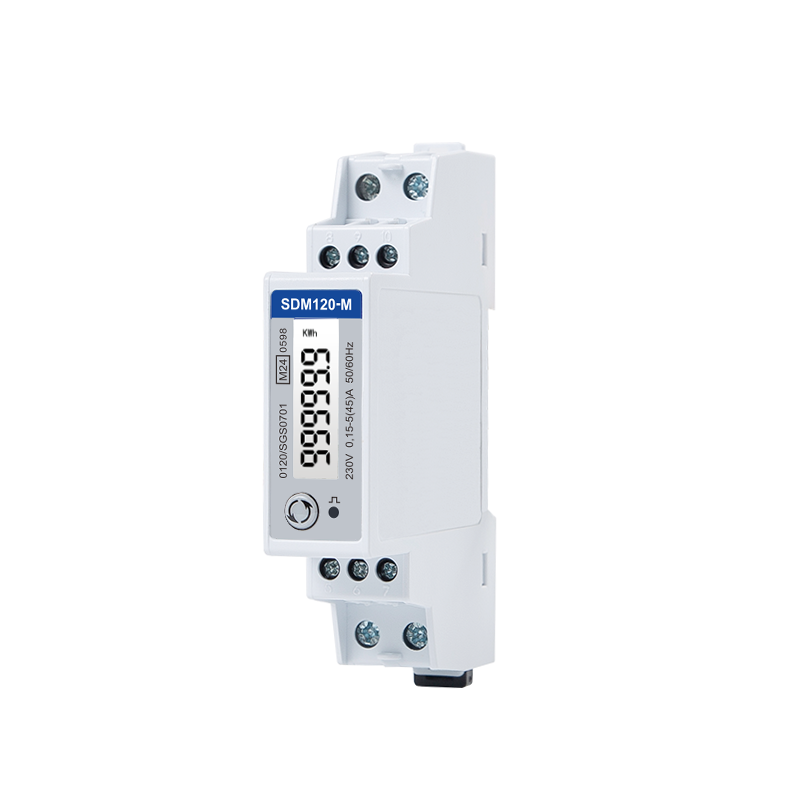Product Consultation
Your email address will not be published. Required fields are marked *
Single-phase mid-energy meters are designed with various mechanisms and features to ensure data integrity and prevent errors or manipulation in metering, which is critical for accurate billing. Here are the key ways these meters achieve this:
Calibration and Accuracy Standards
Factory Calibration: Single-phase mid-energy meters are factory-calibrated to precise standards, ensuring that the energy measurements are accurate and reliable. Calibration is performed using certified equipment, and the meters are tested to ensure they conform to international or regional standards, such as IEC (International Electrotechnical Commission) or MID (Measuring Instruments Directive).
Periodic Recalibration: Many meters include guidelines for recalibration at specified intervals to ensure continued accuracy over their operational life. Some utilities or operators will perform periodic checks to verify the meter's performance and accuracy, ensuring there are no drift or errors.
Tamper Detection and Anti-Tamper Features
Tamper Detection Mechanisms: Modern single-phase mid-energy meters often include built-in anti-tampering features, such as detection of physical tampering, reverse polarity, or bypassing. For example, the meter may detect when the wiring is altered or the seal is broken, and it will log these events for later review.
Event Logging: The meter stores data on any tampering attempts, including unauthorized disconnections, voltage dips, and even attempts to manipulate the meter's readings. This data is typically stored in a secure, non-volatile memory, which makes it difficult to erase or alter.
Security Features in Data Transmission
Encryption: To prevent unauthorized access or manipulation of meter data, many modern single-phase mid-energy meters use encryption protocols (e.g., AES-128, RSA) for data transmission. This ensures that any data sent over communication networks (such as Wi-Fi, Modbus, or RS-485) is secure and protected from interception.
Secure Communication Protocols: In cases where the meter is part of a smart metering system, secure communication protocols such as TLS or SSL may be used to ensure data integrity and prevent manipulation during transmission from the meter to the central system.
Self-Testing and Diagnostic Capabilities
Built-in Diagnostics: Many advanced meters are equipped with self-testing capabilities that continuously monitor the accuracy of readings and the functionality of the meter’s components. If the meter detects a malfunction or abnormal reading (e.g., from electrical noise or interference), it can flag these events and issue an alert.
Error Detection Algorithms: The meter often includes algorithms that check for inconsistencies in readings, such as sudden spikes or dips in energy usage that do not correlate with expected usage patterns. These algorithms help to automatically identify and flag potential errors in measurement before they affect billing.
Event and Audit Logs
Tamper and Error Logs: As mentioned earlier, single-phase mid-energy meters maintain detailed logs of events, including any errors, tamper attempts, or abnormal activities. These logs are securely stored and can be accessed by utility providers to review historical data and ensure that the meter’s readings are accurate and not manipulated.
Audit Trails: In some systems, the meter creates an audit trail of every action taken (e.g., manual overrides, calibration, or system updates). These trails help in tracking down the source of any discrepancies, ensuring full transparency and accountability.

Real-Time Monitoring and Remote Management
Remote Access for Monitoring: Many modern single-phase mid-energy meters are equipped with remote monitoring capabilities. This allows utilities or operators to track energy consumption in real time, which reduces the likelihood of errors going unnoticed for long periods. Continuous remote access helps catch discrepancies early and resolve any issues before they become billing problems.
Automated Data Validation: When meters are part of a larger metering system (e.g., smart grids), the data from the meter is often cross-checked against other data sources (like temperature sensors, system loads, etc.) to validate its accuracy. This layer of automated data validation helps catch discrepancies or anomalies.
Redundancy and Fail-Safes
Dual or Redundant Storage: To prevent data loss due to power failure or system errors, many meters use redundant storage mechanisms, such as EEPROM (Electrically Erasable Programmable Read-Only Memory) for critical data. This ensures that data is safely stored even during power outages or system crashes.
Fail-Safe Operations: If a fault occurs within the meter (e.g., a communication failure or internal error), it often has fail-safe mechanisms to ensure that no erroneous readings are sent to the central system. The meter may hold the last known accurate reading until the error is corrected, or it may automatically adjust its internal operations to prevent inaccuracies.
Regulatory Compliance and Certification
MID (Measuring Instruments Directive): For meters used in billing, compliance with MID or equivalent regulatory standards is mandatory. These regulations ensure that the meter is designed to prevent manipulation and that the measurements it records are accurate and verifiable.
Certification and Verification: Single-phase mid-energy meters are often certified by recognized standards organizations (e.g., CE marking in Europe, UL in the U.S.) to ensure they meet specific safety, accuracy, and reliability standards. Certification processes often include rigorous testing for data integrity and tamper resistance.
Firmware Integrity
Secure Firmware Updates: To prevent the manipulation of metering functions, firmware updates are often protected by secure protocols. Many meters require verification of the firmware’s integrity before allowing an update, and unauthorized attempts to alter the firmware are logged and prevented.
Firmware Integrity Checks: Some advanced meters perform self-checks on the firmware to detect any corrupt or altered code that could lead to inaccurate readings or data manipulation.
Your email address will not be published. Required fields are marked *
We develop and produce high performance electricity meters, power analyzers, current sensors, communication modules and management systems. China Custom Smart Meters Manufacturers and Factory
Eastron China (HQ) : NO 52, Dongjin Road, Nanhu, Jiaxing, Zhejiang, China
Eastron UK : Suite 1 Cornwallis House, Howard Chase, Basildon, UK
Eastron EU : Unit 3 Finglas Business Centre, Jamestown Road, Finglas, Dublin, Ireland
Copyright @ Eastron Electronic Co., Ltd. All rights reserved Electricity Meters Manufacturers
